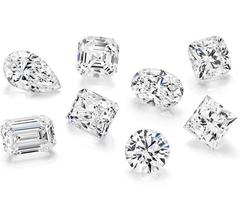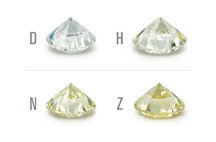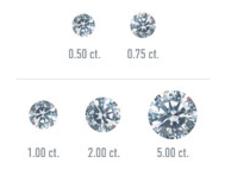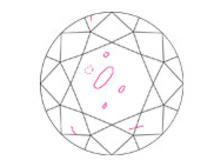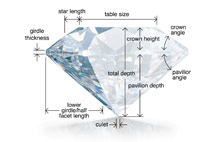G. Allan Jewelers
706 2nd Ave S. Suite 268 Baker Center Minneapolis MN 55402 612.339.5441 Hours M-F 10am-4pm
Diamond Education
Billions of years ago, deep in the earth's mantle, carbon under extreme pressure and equally extreme high temperature, formed a solid crystal structure. Time and shifting earth allowed these crystals to rise to the surface. Thus a diamond was born.
But what makes these sparkling beauties really unique? Each has it's own set of characteristics. No two are exactly the same! These attributes are referred to as the 4 Cs and they are the universal standard by which diamonds are assessed.
CUT
The cut of a diamond is often thought of as the shape. While this is one small aspect, the proportion and finishing of the diamond is the true definition of cut. When a diamond is ideally proportioned, light will enter the stone, interact with the facets and return out the top. Your eye sees this as sparkle, also known as brilliance. When a diamond is cut too deep, much of that sparkle is lost out the sides of the stone. When cut too wide, brilliance is lost out the bottom. Whatever shape you choose, a well cut diamond will reward you with that unparalleled sparkle diamonds are known for.
COLOR
Color in a diamond refers to the absence or colorlessness of the diamond. The color grading scale starts at 'D' or colorless and continues down the alphabet as the diamond shows more yellow body color. The differences from one grade to the next are extremely subtle but will significantly affect the price.
CLARITY
Clarity is perhaps the easiest of the 4C's to understand as it refers to inclusions and blemishes found in the diamond. It's important to know that inclusions are naturally occurring during the formation of the diamond and are unique to each stone. Inclusions are internal to the diamond and can be dark brown or black as well as opaque white. Blemishes are external and on the surface of the diamond. Because inclusions and blemishes are areas that light can not pass through, the size, placement and quantity will affect the grade and therefore the price of each diamond.
CARAT
Carat is a term used to describe gemstone weight. One carat equals 0.200 grams or .007 ounces. The word itself dates back to Medieval times when carab beans were used as a form of weight measurement. Today, gem weight is much more refined. Carats can be further subdivided into "points" with 1 carat equaling 100 points. For example, a 1/2 carat diamond (.50ct) can also be called 50 points, a 1/4 carat (.25ct) called 25 points, etc. When comparing diamonds, it's crucial to remember that carat is strictly a weight measurement and does not mean size. A 1.00ct diamond will not look twice as large as a .50ct diamond.
Ready to start your search?
Click on this PDF icon to see and print a handy 4Cs chart.



